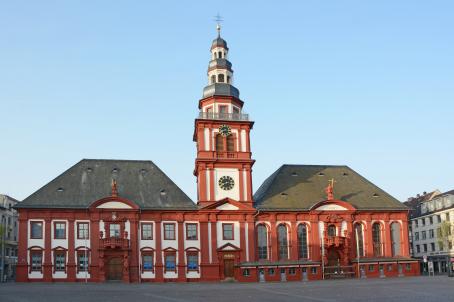Jesuit Church

The Jesuit Church of St. Ignatius and Franz Xaver was built between 1738 and 1760 and designed by Baroque architects such as Alessandro Galli da Bibiena, Franz Wilhelm Rabaliatti and Nicolas de Pigage. In 1773, Pope Clement XIV abolished the Jesuit order and the Jesuit church officially became the Church of the Great Court. However, as early as 1778, the church was given to the Lazarists, who themselves had to leave the church in 1794. In 1802, the Jesuit church in Mannheim became the parish church of the city. After the Second World War, the church had to be extensively restored due to bombing.





